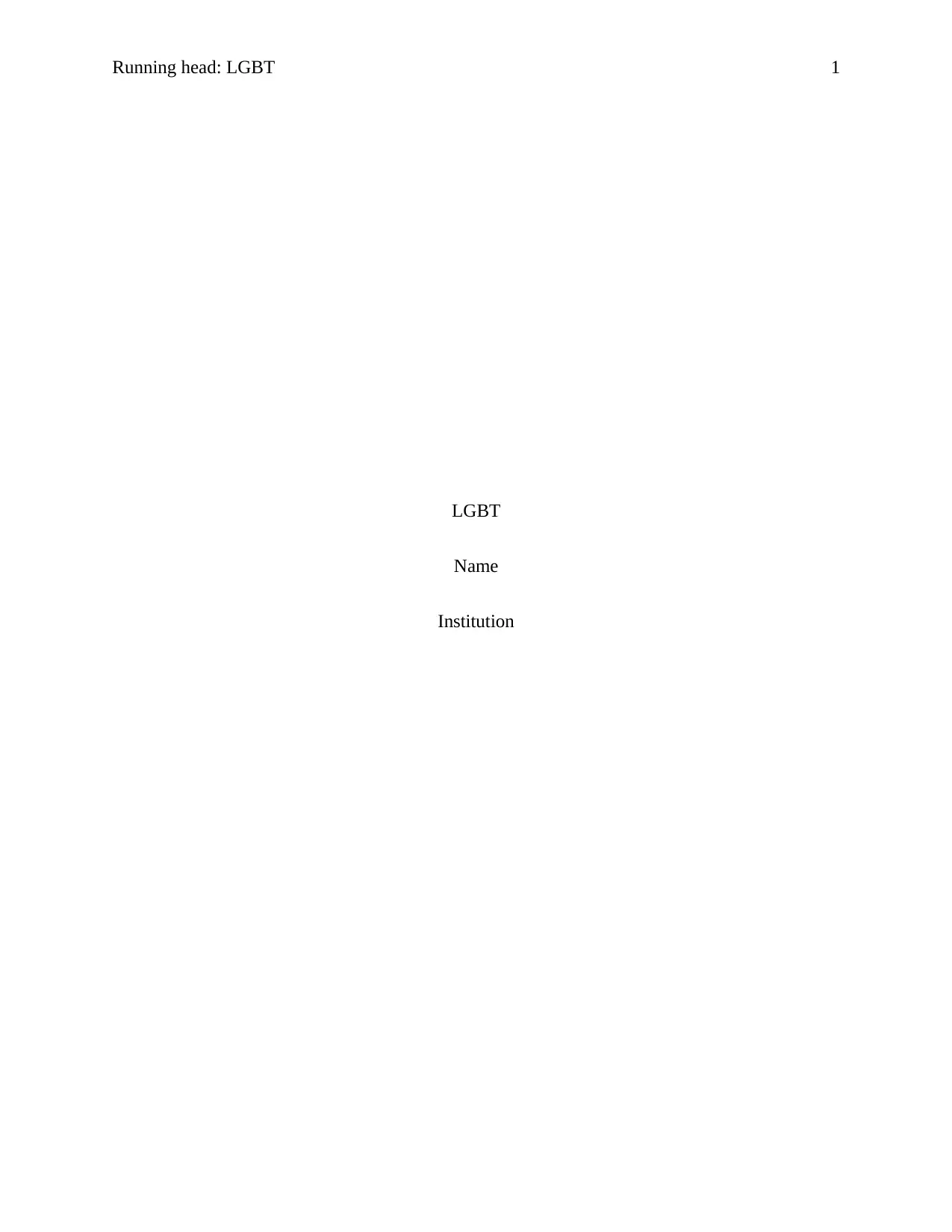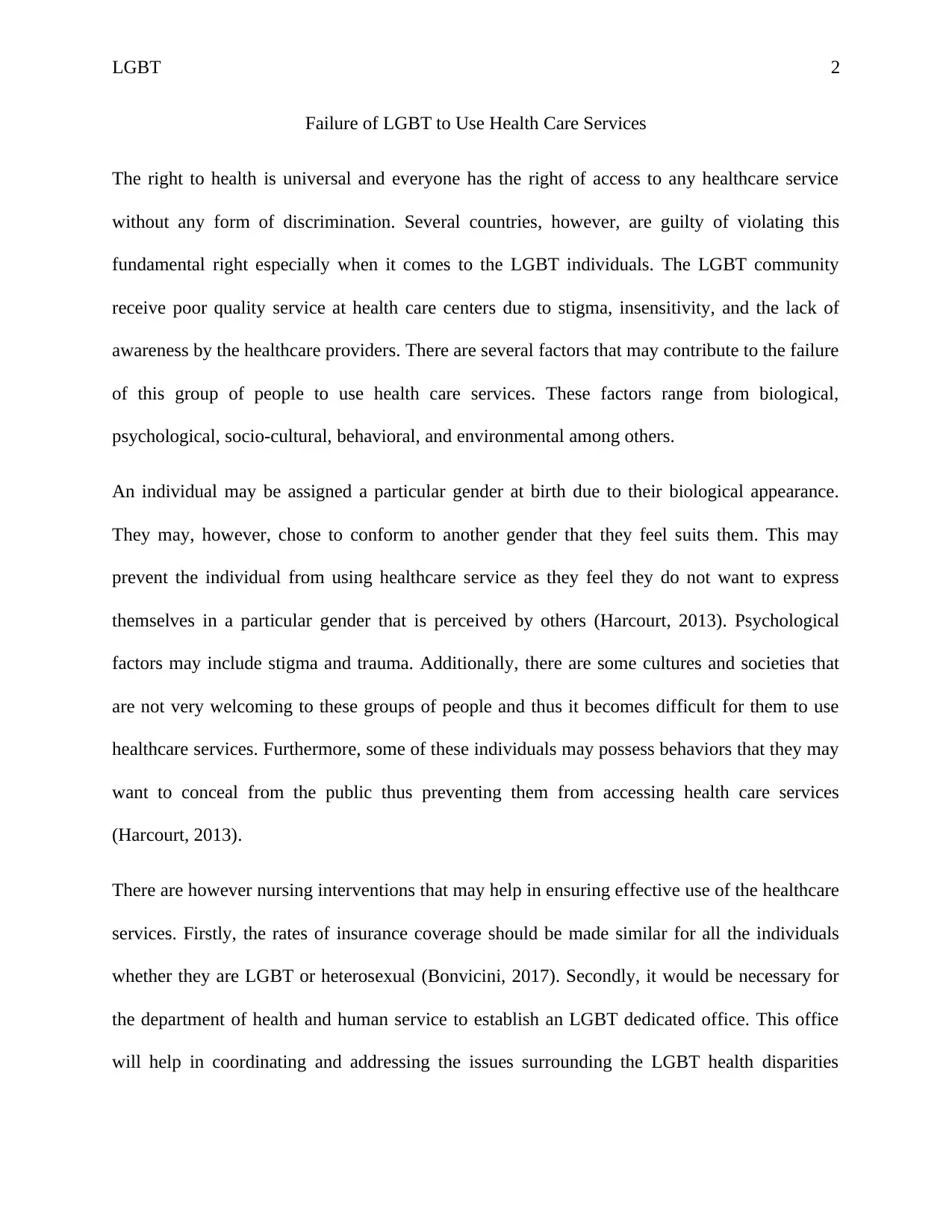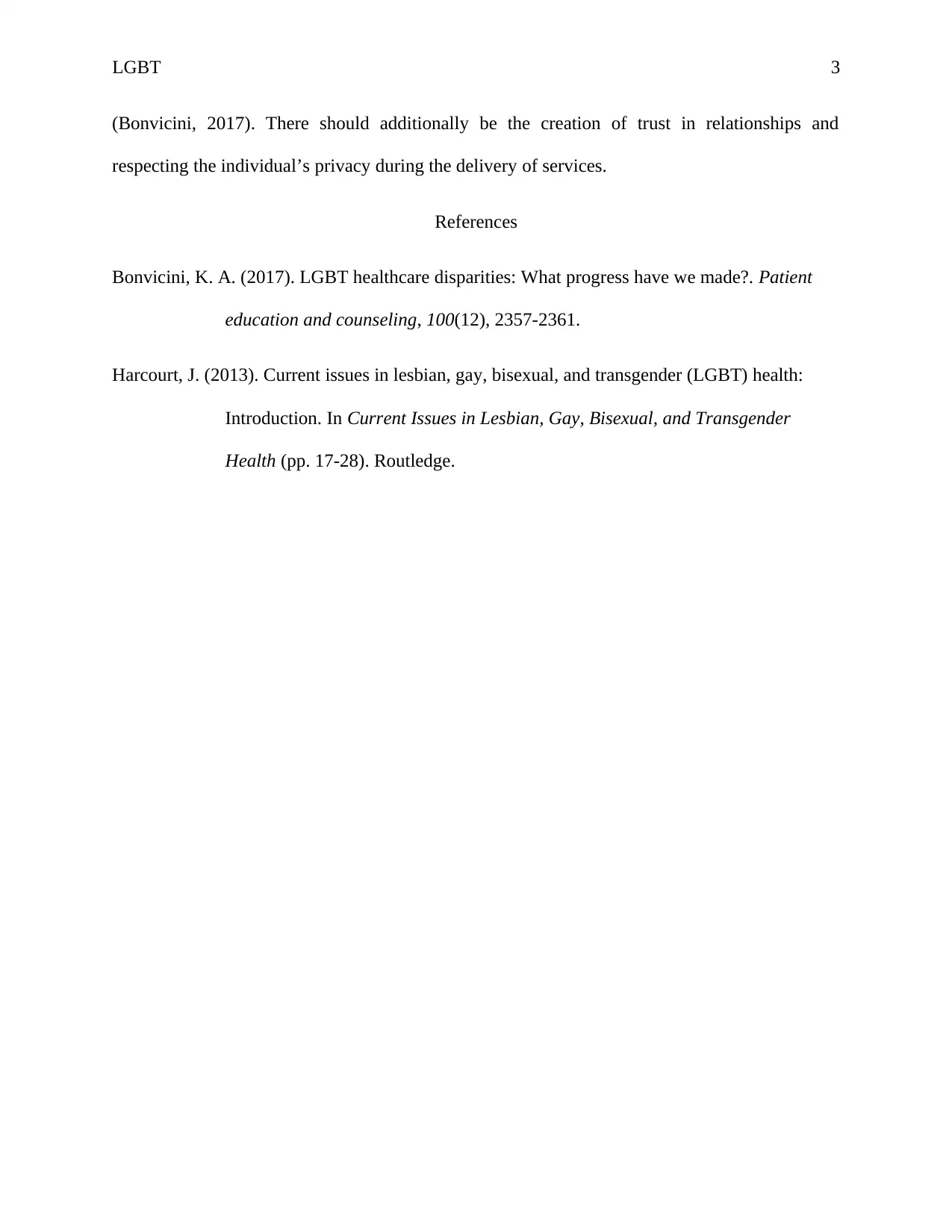Analyzing Healthcare Barriers and Interventions for the LGBT Community
VerifiedAdded on 2023/04/23
|3
|455
|212
Essay
AI Summary
This essay discusses the barriers preventing LGBT individuals from effectively utilizing healthcare services, emphasizing factors such as biological considerations, psychological stigma, socio-cultural norms, behavioral patterns, and environmental influences. It highlights how assigned gender at birth, personal trauma, societal rejection, and the desire to conceal certain behaviors can deter LGBT individuals from seeking medical care. The essay also proposes nursing interventions to improve healthcare access, including ensuring equal insurance coverage, establishing an LGBT-dedicated office within the Department of Health and Human Services, fostering trust in patient-provider relationships, and respecting individual privacy. By addressing these issues, healthcare providers can create a more inclusive and supportive environment, ultimately improving the health and well-being of the LGBT community.
1 out of 3










![[object Object]](/_next/static/media/star-bottom.7253800d.svg)